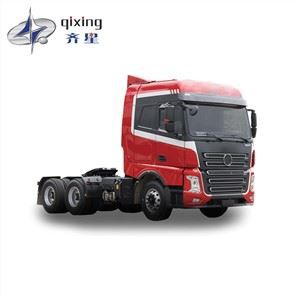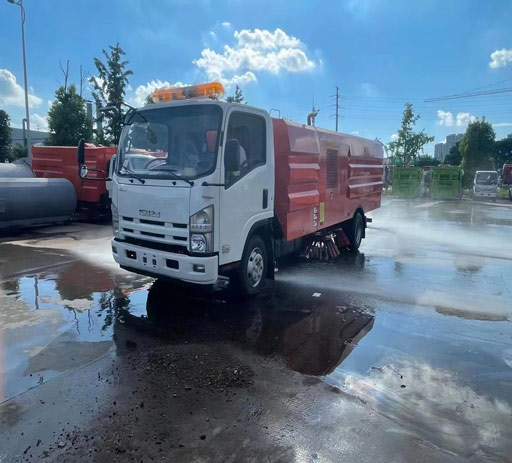Comprehensive Guide to Garbage Trolleys: Types, Uses, and Benefits

Garbage trolleys play a crucial role in maintaining cleanliness and hygiene in various settings, including households, schools, parks, and commercial areas. These practical tools help with the collection and transportation of waste, making the disposal process more efficient and organized. In this extensive guide, we will explore garbage trolleys in detail, examining the different types available, their uses, benefits, and tips for choosing the right one for your needs. Whether you are a homeowner, a facility manager, or just someone interested in waste management solutions, this article will provide valuable insights.
What is a Garbage Trolley?

A garbage trolley, also known as a waste cart or garbage cart, is a wheeled container designed for collecting and transporting waste. Typically made from durable materials, these trolleys come in various sizes, configurations, and designs to accommodate different waste management needs. They are commonly used in residential, commercial, and industrial environments.
Types of Garbage Trolleys
1. Residential Garbage Trolleys
Residential garbage trolleys are designed for home use. They usually have a capacity ranging from 30 to 100 gallons and are made from sturdy plastic or metal materials. These trolleys often come with features like lids and wheels for easy maneuverability.
2. Commercial Garbage Trolleys
Commercial trolleys are larger and more robust, made to handle higher volumes of waste. They can be found in restaurants, offices, and public places. These may have additional features such as locking mechanisms and different compartments for sorting recyclables.
3. Industrial Garbage Trolleys
Industrial garbage trolleys are heavy-duty carts designed for factories and warehouses. They are built to withstand rough usage and can typically carry a larger load, often exceeding 100 gallons. Made from metal or reinforced plastic, they may include rugged wheels and customizable configurations.
4. Recycling Trolleys
Recycling trolleys specifically cater to the collection and sorting of recyclable materials. They often come with multiple bins or compartments, making it easier to separate materials like paper, plastic, and glass.
5. Specialized Garbage Trolleys
Some trolleys are designed for specific purposes, such as yard waste collection or hazardous material disposal. These specialized models may include features like moisture resistance or additional safety measures.
Key Features of Garbage Trolleys
1. Durability and Material
Garbage trolleys are generally made from durable materials such as high-density polyethylene (HDPE), metal, or a combination of both. When selecting a trolley, consider your environmental conditions. For example, metal trolleys may be more suitable for industrial settings where they face heavy use.
2. Capacity
Choosing the right capacity is essential. Smaller trolleys (30-50 gallons) may be adequate for residential use, whereas larger options (over 100 gallons) are necessary for commercial and industrial purposes. It’s crucial to strike a balance between size and maneuverability.
3. Mobility
Wheels and handles play a significant role in the trolley’s ease of use. Look for models with sturdy wheels suitable for the terrain where you’ll use them, and ergonomic handles that provide a comfortable grip for easy pushing and pulling.
4. Lids and Seals
Lids are important for controlling odors and keeping waste covered. Sealed trolleys can also protect contents from pests and adverse weather conditions. This feature is especially valuable in residential and outdoor settings.
5. Customization and Accessories
Some garbage trolleys offer customization options such as colors for different waste types or add-ons like liners, lids, and even locks. These features enhance functionality and may make managing waste easier.
Benefits of Using Garbage Trolleys
1. Improved Waste Management
Garbage trolleys streamline waste collection and transport, making it easier to keep areas clean and organized. They facilitate efficient waste disposal, which can significantly improve cleanliness standards in both residential and commercial settings.
2. Environmental Impact
Using separate trolleys for recyclables and general waste can encourage responsible waste disposal and recycling practices. This minimizes landfill contributions and leads to more sustainable habits.
3. Time-Saving
Garbage trolleys can save users time during waste collection. They provide significant capacity, allowing for fewer trips to disposal points and leading to more efficient overall operations in commercial settings.
4. Hygiene and Safety
Humans encounter fewer contaminants and less odor when waste is contained within a sealed trolley. Moreover, many models design their handles to minimize contact with waste, further enhancing hygiene and safety.
Practical Tips for Choosing the Right Garbage Trolley
1. Assess Your Needs
Determine the primary use of the trolley. Are you using it for home waste, commercial purposes, or specialized waste? Identifying your specific requirements will help you choose the most suitable option.
2. Consider the Size
Measure the space you have for storage and ensure your selected trolley fits that area while being easy to maneuver. A trolley that’s too large may hinder access in tight spaces.
3. Look for User Reviews
Research customer reviews and ratings for various models. Real-world feedback can provide insights into durability and performance that sales descriptions may not offer.
4. Evaluate Warranties and Guarantees
Check the warranty provided with the trolley. A good warranty can be a sign of high quality and manufacturer confidence in their product.
5. Budget
Set a budget before shopping and consider the long-term benefits of investing in a durable trolley versus cheaper, less sturdy models that may need replacing more frequently.
Maintaining Your Garbage Trolley
1. Regular Cleaning
Keep your garbage trolley clean by washing it with soap and water regularly. This prevents odors and minimizes bacteria growth. A quick rinse after emptying it is usually sufficient.
2. Inspect for Damage
Periodically check your trolley for any signs of wear and tear. Look for cracks, rust (in metal trolleys), or damage to the wheels. Addressing small issues early can prevent bigger problems later.
3. Proper Storage
When not in use, store your garbage trolley in a sheltered place to protect it from extreme weather conditions. This extends its life and keeps it in better shape.
Case Studies: Garbage Trolley Implementation
1. Case Study: Residential Community
A residential community implemented a new garbage trolley system to manage their waste. Featuring color-coded bins for waste segregation, the trolley system resulted in a 30% increase in recycling rates. The community experienced fewer pest problems and reduced unpleasant odors.
2. Case Study: Local Restaurant
A popular restaurant upgraded its waste management by investing in commercial garbage trolleys. These trolleys were equipped with locking lids to deter animal intrusion. As a result, the restaurant significantly improved its waste collection efficiency.
3. Case Study: Industrial Facility
An industrial manufacturing facility adopted heavy-duty garbage trolleys to manage scrap materials. By organizing waste into designated trolleys, the facility saw a reduction in cleanup time and improved employee safety by minimizing tripping hazards.
FAQs About Garbage Trolleys

1. What materials are garbage trolleys made from?
Garbage trolleys can be made from plastics like high-density polyethylene (HDPE) and metals such as steel or aluminum. The choice depends on the intended use and environment.
2. How do I clean my garbage trolley?
To clean your garbage trolley, use soap and water. Avoid harsh chemicals that might damage its material. Regular cleaning helps prevent odors and bacteria growth.
3. Can I use a garbage trolley for recycling?
Yes! Many garbage trolleys are designed specifically for recycling. It’s helpful to have separate trolleys for different types of recyclables to avoid contamination.
4. What is the best size trolley for residential use?
For residential use, trolleys between 30 and 50 gallons are generally ideal. However, this can vary based on the size of your household and waste volume.
5. Are garbage trolleys eco-friendly?
Garbage trolleys can contribute to environmental sustainability by promoting recycling and proper waste disposal. Choosing durable models also helps reduce waste production from discarded trolleys.

6. How often should I replace my garbage trolley?
The lifespan of a garbage trolley depends on its quality and usage. Regular maintenance can extend its life, but consider replacing it when you notice significant wear or damage that affects its functionality.
